Essay
The Problem With Problems
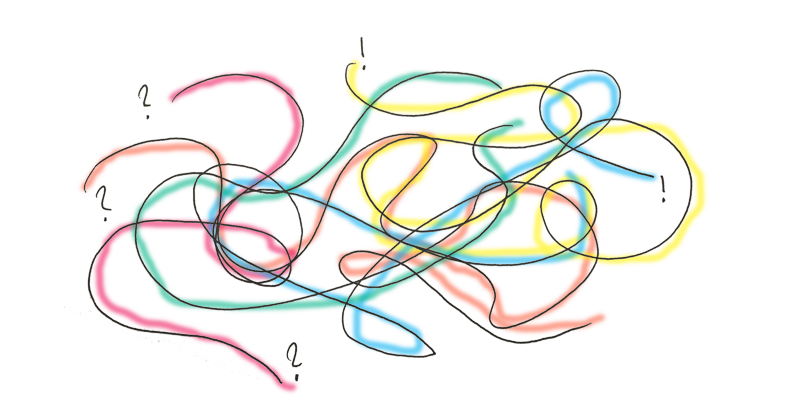
A well known, but often overlooked avenue of exploring potential businesses, is to look for problems to solve. Society, mankind and organizations have all sorts of problems they are more than willing to pay someone to solve.
Here is the interesting thing though; Despite the staggering number of problems in this world, most entrepreneurs are still chasing ideas. I wanted to explore why and made a surprising conclusion.

The experiment.
A couple of months ago I did a little experiment. I posted the following question on a website called HackerNews:
“Ask HN: What problem in your industry is a potential startup?”
The result speaks for itself. As you can read there is a lot of good examples in that thread and the discussions which unfolded afterwards was even better. Since that specific experiment worked out great, I thought I would try my luck in other communities, but quickly realized, that asking wasn’t just, magically going to be as good. The results were fluctuating but ultimately disappointing.
I tried other approaches too, but they gave me even less. Yet from the HackerNews thread I I was on to something. HackerNews though, isn’t like any other place. It’s a community of people from a wide variety of backgrounds and working inside, a disparate number of industries. Ranging from designers and developers to musicians, economists, students, MBAs, doctors, traders, scientist and lawyers, they all have one thing in common; They all care deeply about building businesses using technology. That’s why it worked so great with HN and not the other places.
Were are the problems?
So why is it that media, blogs and communities are filled with business ideas, but not with business problems? The world certainly don’t have lack them and it’s not like we don’t like to talk about other problems. To understand why, we need to understand what problems actually are.
As I see it there are three major types of problems. Social, human and organizational. It is the latter of these that is of special interest to me, as the two others are rarely solved by businesses.
Organizational problems are problems that exist inside any organization. To understand them you need to have worked inside of or with them. They are problems like “Why does it take so long to process an order”, “Why is our cash flow bad”, ”Why is it so hard to ship a package”, “How do we keep track of all this inventory”, “How do we find the right candidate”, “How is our competitors outcompeting us on price” and so on. All problems that organizations deal with all the time.
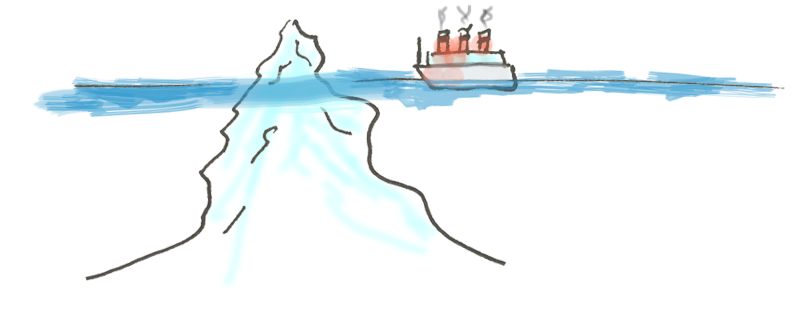
Hidden problems.
Social, human and organizations problems have what I call hidden problems; problems underlying the obvious solution.
For a social problem like poverty, the obvious solution is to provide enough wealth for everyone so they aren’t poor anymore. The reason why we can’t just do that is because you can’t just create wealth.
The obvious solution to the human problem like “How do I find love?” is to find someone to fall in love with. The problem of course is how do you do that.
For organizational problems the same principles apply as with the two others, but with one important difference; The organizational problems are harder to expose, however they are easier to analyze once found. This is what makes them potentially valuable businesses. They exist within a structure and allow you to explore their nature much easier. They aren’t available to everyone, but that is why, they are in high demand.
As an example — In order to bill the client design agencies normally need to track the time they spend on a project. The designers fill out their time-sheets and the agency invoice the client. There are a lot of solutions to that problem like time-tracking software. But inside this hides another more illusive problem; Invoices often gets sent out too late because timesheets aren’t being filled out on time. Timesheets aren’t being filled out, because everyone hates doing timesheets.
It gets worse — Tracking your time make sense when you are billing by the hour, but many agencies today bill per project. So why are they still tracking the time? Because management likes to be able to track the hours people spend on these projects so they can better predic,t what the price of the next project should be.
Here is the issues with that though — There isn’t any evidence showing this is even possible. And so a lot of time is wasted waiting for the designers to fill out their time-sheets; on a project thats not paid by the hour; in order to better estimate future projects; which there is no evidence is doable. Just because thats how it’s always been.
I know all this because I was working in these agencies for more than a decade and even ran my own for 7 years. Because I was inside the organization I got exposed to the problems; had access to the data and could analyze it. So problems in organizations are especially interesting because they often have more tangible underlying problems that can be turned into businesses once you unveil what the obvious solution hides a layer or several deeper.
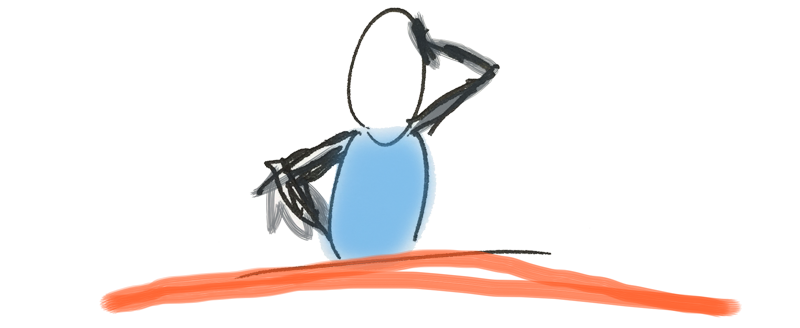
The problem with problems.
These hidden problems are the true gold standard of entrepreneurism and it’s amazing how little discussion there actually is about how to find them. It’s hardly a surprise though since they; as we can see, can be hard to find and I think there are a couple of reasons why.
Hidden problems aren’t obvious even to those who experience them every single day.
Most people have enough human problems. They are often hired to do a specific job and don’t necessarily think about these problems as something that could be solved. Many just see them as part of the actual process. So to even understand they are problems, require a certain kind of attention, most people simply don’t have. (I have later learned that this is called functional fixedness and is a cognitive bias. Which explain why people sometimes say “Why didn’t anyone think of this before?” — most people simply don’t think like that.)
Hidden problems often only reveal themselves over time.
Not all problems are even instantly recognizable. Instead they only reveal themselves over time or through years of experience. This also means that many of these problems require a certain age and experience to even notice let alone understand. Perhaps this is one of the reasons why the average age of a founder is 38 and with 16 years of working experience behind him.
There is a disconnect between what kind of problems the young and the old generation experience.
It is often said that “Youth is wasted on the young”. Based on my little spare time study, in this context, it seems truer than ever. The youth have all the energy and time to spend, no obligations and no financial worries. But they have very little life experience and exposure to these hidden problems. So what they end up solving are the kind of problems primarily young people have. This certainly makes for some very amazing products, but I can’t help feeling a little disillusioned. The amount of time and energy that goes into fun, but ultimately useless ideas, rather than fixing some of these hidden problems is mind-numbing.
On the other hand, the older generations are exposed (aware or unaware) to a lot of these hidden problems. They have experience on how to solve them because they understand them. Yet by that time, most of them have to provide for a family, pay of their mortgage, tuition fees, healthcare, yearly vacations and the 3 cars. They also often lack the imagination on how to solve things in a new technological paradigm.
So I now realized that there is a potential goldmine of problems we simply don’t know of, because the people who are exposed to them aren’t connected with the people who have the opportunity and creativity and energy to solve them. Which begs the question:
Are the old and young generations wildly underutilizing each other as resources?
Think about it. When you reach 35 in Silicon Valley you are considered an old timer. I have heard about young people, discussing whether they should hire someone because he was over 30. Their concerns? — given his high age could he fit into the culture. There is no doubt that being young in a startup has it’s advantages, but it certainly also come with a lot of disadvantages. There is a lot of wasted energy, which could have been put to better use if only there was better way to unite experience and young creativity to solve these problems. Which brings me to my final observation.
Perhaps the real power of diversity in business isn’t hidden in gender, race or education, but in age. I think thats an idea worth spreading.
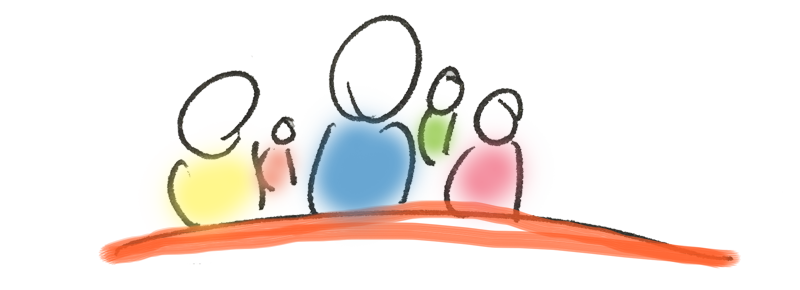
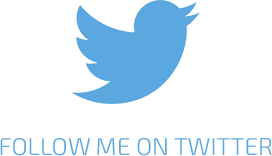
#000 #fff
Pro tip, bruh: #000fff is blue
Thank you Thomas for the great article. I am from Germany and went through an apprenticeship program (in IT) when I was young and learned a lot from the experience of my mentors. It was a great start into the business world and I acquired a solid foundation of values, interacting with people and demanding knowledge of the older colleagues. It helped me a lot putting thing into perspective during my time in university.
I always had a mindset of trying to find hidden problems and enjoyed questioning status quo, but never pursued one of them. I am planning to change that in 2016 :)
Btw. you mention that the average founder age is 38, what is your source? because I recently read it’s 32.
[…] The problem with problems […]
[…] The problem with problems […]
Something I learned a long time ago, a poignant point on the path, was shared with me by an Indian Elder. He knew of my desire to be wise and to share that wisdom well. As I was approaching 50 he relates to me that in his culture, one cannot form or join a council until they are 51.
Can you grok the wisdom in that? I got it immediately, and it gave me cause to observe my own progress more deeply over the next few years.
What I’ve also found is that focusing on problems often exacerbates the problem, even when we seek to create a solution. What I’ve found to be an amazing shift includes the challenge to change (only three letter difference – ‘lle’) and that the previous liabilities, limitations and excuses when addressed and evolved lead toward creating something new – how we desire the situation to be.
This new living awareness moves beyond the problem and allows the creative commons, the collaborative consciousness, to emerge as a force or a meme with tremendous capacity. A side-effect is that it also allows the problems to be solved as a matter of course, not focus.
It is my sense that co-working and incubator space development is a natural opportunity for this new living awareness to evolve and grow into a recognizable force for change, perhaps inclusive of the B-Corps and ISO 26000 Social Responsibility Standards. We are amazing creatures.
[…] The Problem Gap […]
I think of these as ‘hybrid teams.’ Teams that include people from inside an organization, from other organizations (suppliers, partners, customers, other stakeholders), and freelancers. This opens all sorts of questions about who owns what data, what can be shared with whom and when … nice chewy problems. I shared an older blog post on LinkedIn last week What Kind of Diversity When. You do a much better job on age diversity.
I agree with the between organizations but thought that it was kind of implied.
More to your point; I believe an increasingly number of people are going to work together but remotely which will open up for a whole new suite of problem and therefore opportunities.
Fascinating approach. I will post it over to the LinkedIn Design Thinking group and see if it provokes discussion. A quibble, the organizational problems increasingly worth solving (building a business around) are those that cross organizations. Permeable information filtering and exchange membranes so to speak. Your point about age diversity is interesting. My own start-up has a 15 year old intern who has made a huge contribution to myself and one other person in our late 50s (or getting close to late 50s anyway). We have a couple of investor/advisors in their early 70s (who all cycle commute). But I need to do more to integrate these people and drive more from the diversity.
Thank you so much!
I just reed this post and gotta say it’s worth the time spend here. By the way, i discover your app Ghostnote too (thanks to you’re final note) and bought it. Amazing!! Keep the good work going on. Cheers from México.
[…] Are the older and younger generations wildly underutilizing each other as resource? […]
AdoptEachOther: A social network for adults to adopt each other.
Everybody you see is somebody’s parent, sibling, or child. But what
of the young man lucky to have survived a violent home? What of the
transgender girl disowned by her family? What of the survivor whose
family died in an accident? What about all of those who are alone in
the world, no matter the reason? To all of those suffering for someone
who care for and to care for them, the solution is clear: love one
another. To those whose lives overflow with love, seek out and take in
as family those you find deserving. If you have love to give, if you
need someone to love you, if you want to save a life, or if you need
someone to save yours, AdoptEachOther is there to facilitate that. Be
each other’s keeper. Adopt an adult to be your grown son. Adopt a
widow as your mother. Pledge yourselves to each other. Promise each
other a future.
Oh wow going to check that out right now.
I am working on an app that addresses a segment of the generational divide problem: https://assembly.com/adopteachother
Amen! Bring back the apprenticeships!
You just made my day
I have proof this is true. I have 35+ years experience in micro data processing. I have mentored several young people and seen them rocket to the top. I understand it is our nature to push away from parents to strike out on our own. I also understand why older people resist change.
Magic happens when the young seek to understand the wisdom of their elders and elders hold on to explorer spirit of their youth.